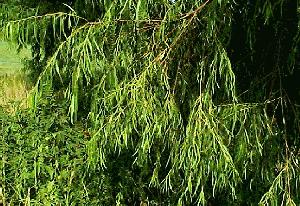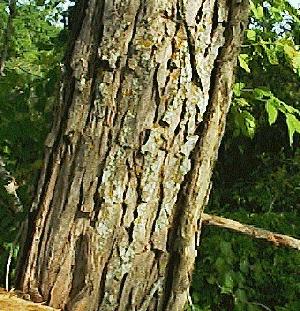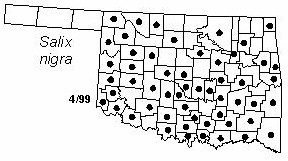

Tree to 15 m (50 ft) tall and 30 cm (12 in) diameter, often with several trunks and leaning over water from a streambank or lakeshore. Bark dark brown or dark gray, deeply divided into scaly forking ridges. Twigs glabrous, very thin, yellow to green or brownish. Buds very small, brown, covered by one scale, no terminal bud. Leaves alternate, long, narrowly lanceolate, 8-13 cm (3.1-5.1 in) long and 1-2 cm (0.4-0.8 in) wide, finely serrate, shiny green above, pale green below. Flowers in catkins 2.5-7.5 cm (1-3 in) long at ends of leafy twigs, very small, numerous, with yellowish hairy scales, pistillate and staminate on different trees, appearing in early Spring with the leaves. Fruits numerous conical capsules about 5 mm (0.2 in) long, opening in late Spring to release many very small cottony-tufted seeds.
Distribution: Native to eastern and southwestern U. S., southeastern Canada, and northeastern Mexico.
Habitat: Usually found in wet soil near streams and lakes.
NWI status: FACW+
Comment: Salix is the old Latin name for the willows; nigra (black) refers to the bark, although most specimens have gray or brown bark.
Distribution in Oklahoma: 
BACK
NEXT
RETURN TO INDEX
Last update: 9/17/99
 Go to Oklahoma Biological Survey Home Page
Go to Oklahoma Biological Survey Home Page
 Disclaimer
Disclaimer